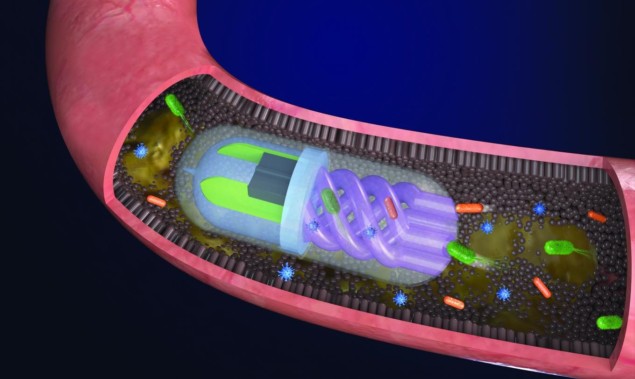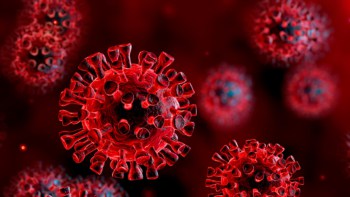
An international team of researchers has designed a 3D-printed pill that combines an osmotic sampler with microfluidic channels that can profile bacterial species inhabiting the gut (microbiome). This could have important implications for conditions that affect and are affected by the intestinal microbiome (Advanced Intelligent Systems 10.1002/aisy.201900053).
The role of the gut microbiome in favouring or protecting us from certain diseases is now under the spotlight. Recently, a potential link with the development of Alzheimer’s disease has been highlighted, leading to a focus on the development of technologies that could sample the microbiome constitution in vivo.
Unfortunately, there is currently no noninvasive tool capable of profiling microbiome populations throughout the entire gastrointestinal (GI) tract. Conventional methods analysing faecal DNA and metabolites provide little information about the environment upstream of the distal colon. The new pill, designed by a team led by Sameer Sonkusale from Tufts University, remedies this.
A lab-in-a-pill device…
Covered with a pH-sensitive coating that only dissolves in the higher pH environment of the small intestine, the pill is engineered to specifically sample gut bacteria and stay inactive in the stomach. A small neodymium magnet embedded in the pill also allows it to be held in place externally once it reaches the desired location, in order to sample more from that region.
Once the coating is dissolved, the osmotic pressure that has been built up across the membrane causes gastric fluid to be sucked into the helical channels of the pill – bringing with it the bacteria. Bacteria remains trapped in the channels, while water diffuses across the membrane of the osmotic pump to the salt chamber. Excess salt water discharges through the exit nozzle.
…that can sample gut microbiome
The researchers characterized the pill’s sampling performance using realistic in vitro models and validated it in vivo in pigs and primates. Experiments in intestines freshly dissected from pigs showed that the pill could move inside the GI tract under realistic flow conditions. Meanwhile, the in vitro investigations revealed that bacteria motion pattern (motility) and the solvent pH had no impact on the pill sampling performance.
Finally, the team tested the pill’s ability to sample gut luminal content in a weaned pig and in four macaques. The microbiota profile of samples recovered from the pills’ collection channels closely resembled the profile of samples recovered from the surrounding intestinal lumen or faeces. Additionally, extra bacteria found in the pill but absent from faeces matched the description of the microbiome of more proximal organs found in the literature. These results highlight the pills’ ability to sample the entire GI tract.
By providing spatial information of the microbiome profile, the authors hope that this pill will help advance novel treatments and therapies for a number of diseases and conditions.



